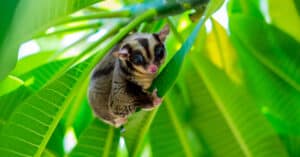
Are you searching for information on sugar glider prices? Then you are in the right place.
Sugar gliders are becoming a favorite pet for most exotic pet owners, and rightly so—these marsupials are cute, entertaining, and surprisingly playful. Even so, deciding to purchase and keep sugar gliders shouldn’t be taken lightly—owning this marsupial is a big responsibility that comes with a huge financial commitment.
This sugar glider price guide will look at the costs of owning and keeping this animal, including their purchase cost, the cost of their food, and the cost of supplies they need to be comfortable.
But first, a quick look at what sugar gliders are.
Sugar gliders are relatively small marsupials native to Australia and Indonesia. The primary distinguishing feature is their patagium ( a soft, thin membrane that extends from their front limbs to their hind limbs), which they use to glide through trees.
Sugar gliders were named so because of their fondness for eating forest sweets such as eucalyptus sap, acacia gum, and pollen. The average lifespan of a sugar glider living in the wild is about 3-9 years. On the other hand, domesticated sugar gliders can live for up to 15 years, meaning if you decide to buy or adopt one, you can enjoy its company for a long time.
How Much Does a Sugar Glider Cost?
While small, sugar gliders are by no means cheap. Generally, how much you spend on a sugar glider will depend on age, with infants tending to be more expensive than adults. The main reason for this is that infants are easier to train.
An adult sugar glider can cost between $100 and $200, while infants typically cost between $200 and $500. The purchase price may be much higher if you are looking for a sugar glider with rare coloration, such as albino or leucistic—you can expect to pay as much as $1000 for such sugar gliders.
It’s important to note that sugar gliders are highly social animals. Keeping them in pairs is recommended to ensure their happiness. Obviously, having two means that you’ll spend more.
That said, it’s possible to find sugar gliders being given away for free. Even so, just because these animals are being given out freely doesn’t mean they are not costly upfront. There’s a likelihood that the previous owners could not meet the financial obligations of owning these pets and therefore opted to give them away.
Another thing you should keep in mind is that owning a sugar glider is illegal in some U.S. states, including Alaska, California, and Hawaii. Additionally, some states require permits which could add to the acquisition cost. So, check the laws and regulations in your area to determine if you need a permit before buying these exotic pets.
So where can you buy these pets? The best place to buy a sugar glider is from an experienced breeder. Ensure the breeder has all the required permits by the U.S. Department of Agriculture.
Suppose you are looking for a free sugar glider; you can try a sugar glider shelter or an exotic pet rescue.

Graceful glider in motion, embodying the beauty and agility of these remarkable marsupials.
©Arif Supriyadi/Shutterstock.com
How Much Do Supplies for a Sugar Glider Cost?
You will need to buy several supplies for your sugar gliders, including:
1. Cage ($100-$150)
Aside from the sugar glider itself, the cage is one of the highest upfront costs.
Sugar gliders live on trees in the wild, meaning the cage should have sufficient climbing space. The cage should be taller than it is wide to provide ample space for climbing. The minimum cage size for two sugar gliders is 24 inches wide by 24 inches deep by 36 inches tall.
However, it’s advisable to get a bigger cage. A bigger cage will provide enough space for the sugar gliders to play and climb and save you money if you decide to get more sugar gliders. The spacing of the wire in the cage shouldn’t exceed half an inch. Moreover, the cage doors should be big enough to access your gliders and make arranging cage accessories easier.
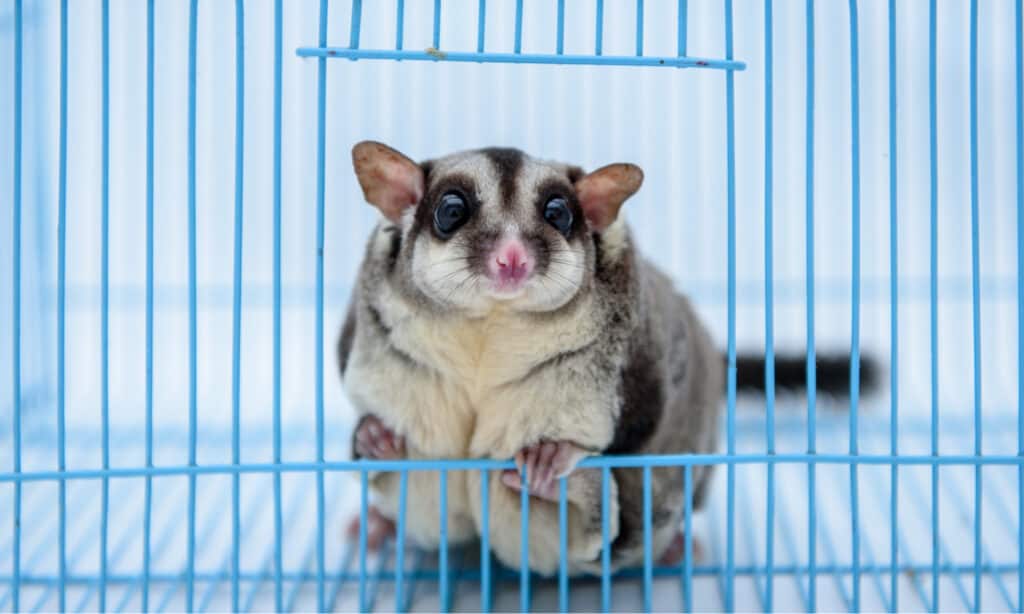
A well-appointed cage provides comfort and stimulation, with a variety of toys, branches, and cozy pouches, ensuring a happy and secure home for this charming marsupial.
©MARVIK/Shutterstock.com
2. Nesting Pouch ($10 each)
Sugar gliders spend considerable time sleeping (13-19 hours). Therefore, you need multiple nest pouches in different locations in your cage for them to sleep. Preferably, the nest pouches should have metal hanging clips instead of plastic, which they can easily chew.
3. Food and Water Dishes ($15)
You’ll also need to buy food and water dishes for your gliders. The dishes should be ones that can hang on the side of the cage. This is because you can mount them high enough so your gliders don’t climb above them and accidentally defecate in the food or water. The dishes should also be easily detachable and easy to clean. The dishes should be made from glass or stainless steel and have a bolt-on design.
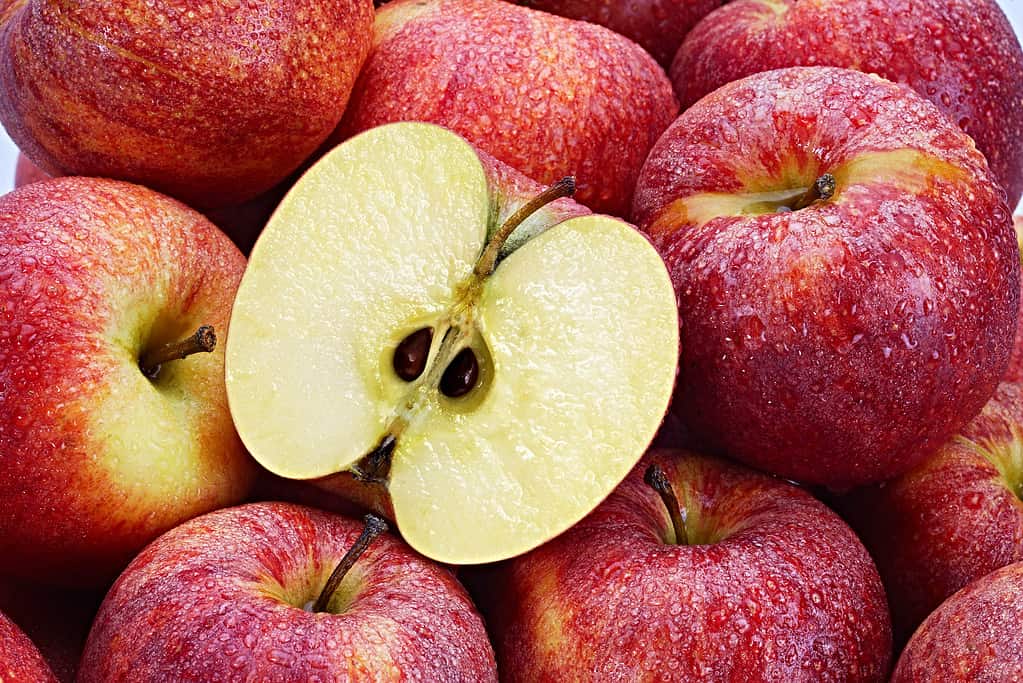
Nutritious treat: A fresh apple slice entices a sugar glider with its natural sweetness and health benefits, providing a delicious and wholesome snack for this adorable marsupial.
©hacohob/Shutterstock.com
4. Exercise Wheel (25 each)-one per glider
As mentioned earlier, sugar gliders are very active animals. As such, an exercise wheel is a necessity for them. The exercise wheel should be large enough and be designed specifically for sugar gliders.
You might be tempted to buy hamster wheels for your gliders. Don’t. These exercise wheels are often small and have center axles, making them unsafe for sugar gliders. Hamster wheels also constrain gliders to the bottom of the wheel rather than letting them hop across.
5. Toys and Cage Accessories ($50+)
The cage shouldn’t look bare. You should accessorise it with ropes, ladders, branches, plants, tunnels, and hoops. Such accessories can help create a stimulating environment that keeps your sugar gliders active and alert. Periodically move and switch the accessories to optimize your pet’s physical and mental health.
Besides the mentioned cage accessories, you should also include toys to enhance the interactiveness of your pet—the toys not only piques their curiosity but also helps increase their movement. Just like with the cage accessories, you should revitalize your pet’s surrounding by periodically rearranging the toys within its cage.

Exploring the joy of play! Toys are essential for sugar gliders, stimulating their curiosity, promoting exercise, and providing mental enrichment.
©Peter Vanco/Shutterstock.com
6. Bedding ($10)
Putting bedding at the bottom of the cage helps absorb waste. The bedding should be cleaned at least twice a week. One of the most recommended bedding is a layer of shavings. Don’t use cedar.
7. Travel Carrier ($15-$50)
You may need to travel with your sugar gliders from time to time. A travel carrier should therefore be on your purchase list. A travel carrier can also come in handy when cleaning the cages—they can serve as temporary homes for your gliders as you make the cage more hygienic.
8. Bonding Pouch ($15)
As their name suggests, bonding pouches are helpful with the bonding process—they offer a safe and convenient way to spend quality time with your glider as they sleep or relax. Over time, they’ll get used to the sound of your voice and your smell.
9. Cleaning Supplies
Cage sanitation is one of the primary responsibilities of owning an exotic pet. You need to clean the mess that your sugar gliders make. Remove dirty dishes, wipe off the feces, and change the cage liners daily.
You can do a more thorough cleaning once or twice a week by wiping down the bars, washing the accessories, and spraying down the cage with a hose or pressure washer. Ensuring your sugar gliders’ cage is clean can help ensure they don’t face any health issues.
Other supplies you may need include nail trimmers, nest boxes, fruit fly traps, and a nocturnal pet lighting system. Generally, the cost of the supplies can range between $250 and $500, depending on the ones you opt to buy.
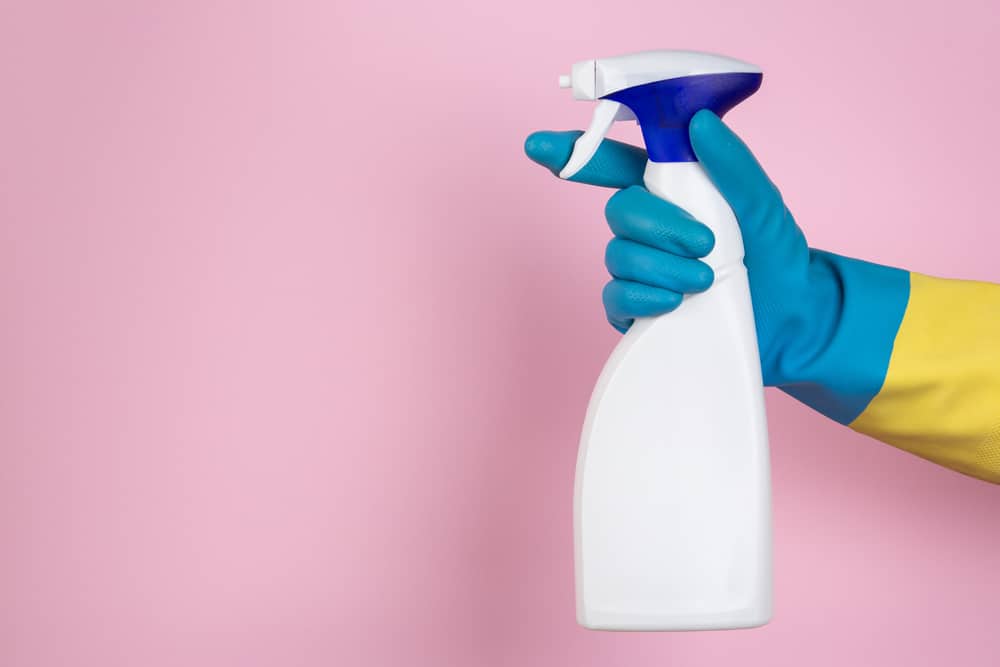
A gentle spray freshens the sugar glider’s habitat, effectively cleaning and maintaining a hygienic living space for their optimal health and happiness.
©Sergio Rojo/Shutterstock.com
How Much Does it Cost to Feed Sugar Gliders?
Sugar gliders are omnivores. Their diet consists mainly of fruits, tree saps, and insects. Commercial pellets are an excellent option for providing sugar gliders with all the nutritional requirements. Even so, commercial pellets shouldn’t make up more than a third of their overall diet. Commercial pellets should be supplemented with fresh vegetables, fruits, and insects.
Feeding them too many commercial pellets may make them overweight and sluggish.
You should also budget for some healthy treats. The treats can break the monotony of your gliders’ diet and add behavioral enrichment to the lives of these marsupials. More importantly, treats help create a connection between the pets and the pet owners.
Some excellent treats include acacia gum, sugar beet, grasshoppers, sugarcane, honeydew, worms, and eucalyptus branches. Offer the treats 2-3 times a week or as a small part of their daily diet.
While these marsupials are small and don’t eat much food, they have a specialized diet that costs a lot of money. You can expect to spend roughly $30-50 every month on food supply. This translates to around $300-500 per year
How Much Will You Spend on Veterinary Care?
Upon buying or adopting a sugar glider, you must take them for a vet visit within the first 48 hours—most breeders offer a health guarantee that expires after this duration.
Generally speaking, sugar gliders are fairly healthy animals that don’t require any vaccinations. These marsupials are vulnerable to a few conditions, such as diabetes and obesity. However, these conditions can be kept in check with a well-balanced diet and exercise.
That said, although gliders don’t require annual vaccinations, it’s still recommended that you go for yearly checkups to confirm that your pet is healthy. A typical health check could cost you between $50 and $100. You should also deworm your gliders at least once a year. This treatment is usually inexpensive and typically costs $15-$30.
The visits that might be costly are those for emergency procedures. The need for such operations may arise due to an accident or a serious health issue. Given that emergency procedures cost around $200, it is advisable to set that money aside to avoid being caught unprepared. Many vets have limited resources for exotic pets, such as sugar gliders. As such, it is important to research to determine which vet can treat your pet in case of a medical emergency.

A devoted owner invests in a veterinary visit for their sugar glider, prioritizing their health by seeking professional care.
©Pixel-Shot/Shutterstock.com
How Much Does It Cost to Insure a Sugar Glider
Insuring exotic pets like sugar gliders can be quite costly, especially if you own more than one. The annual cost of insuring a pair of gliders can cost $200. Given that these animals are generally healthy, it is better to set aside the $200 for emergency cases rather than insure them, more so if they are still young. You can purchase insurance coverage for them as they get older.
How Much Does It Cost to Neuter a Male Sugar Glider?
If you plan on keeping male and female gliders together, having the male neutered is advisable. Otherwise, you may have more gliders than you can manage to care for. The neutralization process is simple and usually costs around $100. You may also opt to spay the females, but the process is much more complicated, and most vets don’t perform it. In short, neutering males can help you manage your costs unless you’re aspiring to be a breeder.
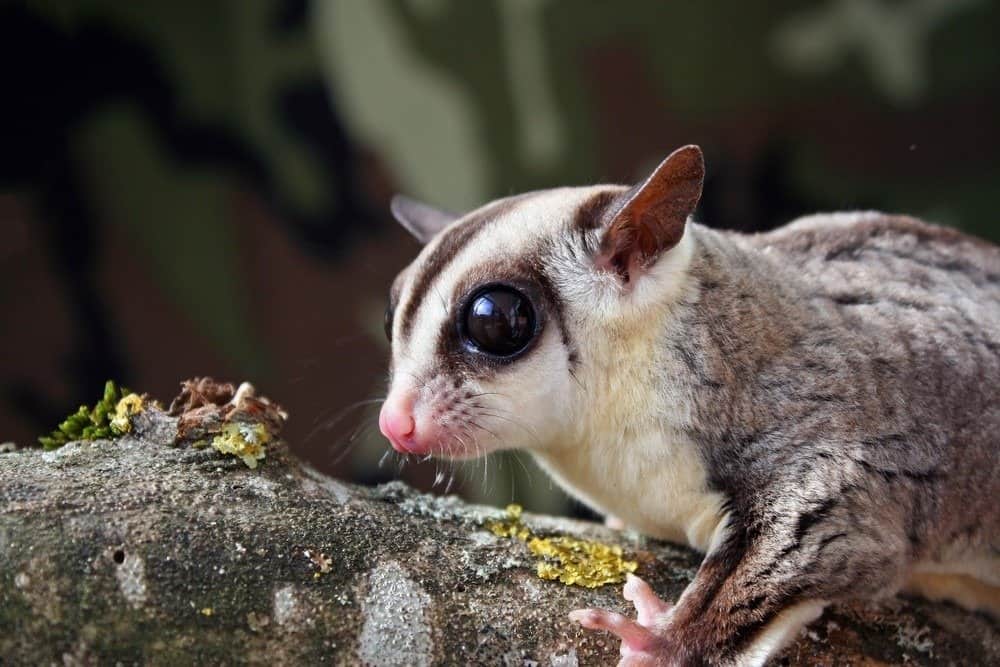
Sugar gliders are omnivores. Their diet consists mainly of fruits, tree saps, and insects.
©Fercast/Shutterstock.com
How Much Does It Cost to Groom a Sugar Glider
Sugar gliders don’t need baths when placed with other members of their species. These marsupials groom themselves, meaning you don’t have to worry about bathing them.
Even if you only own one glider, you won’t need to worry much about its grooming. The only part of grooming you must focus on is trimming their nails. For this, you’ll need nail trimmers which cost about $10.
Sugar Glider Prices: The Total Cost of Owning a Sugar Glider
Sugar gliders aren’t your typical pet. As such, before you bring one home, you must research all the costs of keeping them. Consider not only the cost of purchasing them and setting up the habitat but all the costs you’ll incur to ensure they are healthy, happy, and comfortable.
Here’s a summary of the estimated annual cost of keeping a sugar glider.
- Purchasing/Adopting =$100-$500
- Supplies = $250-$550
- Food and Treats =$300-$700
- Annual Veterinary Costs =$50
- Insurance =$200
- Neutering =$100
- Deworming =$15-$30
The total cost of keeping a sugar glider will depend on several factors. For instance, someone keeping more than one glider will spend more than someone who holds only one.
When buying supplies for your pet, always try to buy the best quality. Doing so will ensure you don’t have to spend money on the same items every few weeks. Also, try as much as possible to get the best quality food to ensure your pet doesn’t develop health issues caused by eating bad food or an imbalanced diet.
The only area you can save on is the initial purchase of the glider. If you’re lucky, you may find one that needs a new home, and its owners are giving it away for free or at a low price. You could also find high-quality second-hand cages at lower prices.
We’ve reached the end of this sugar glider price guide. By now, you should determine whether you can meet the cost of owning these exotic pets and the preparations you should make to ensure they have a comfortable habitat. If you don’t have enough money to keep this pet, consider a different one.
The photo featured at the top of this post is © LesPalenik/Shutterstock.com
Thank you for reading! Have some feedback for us? Contact the AZ Animals editorial team.



